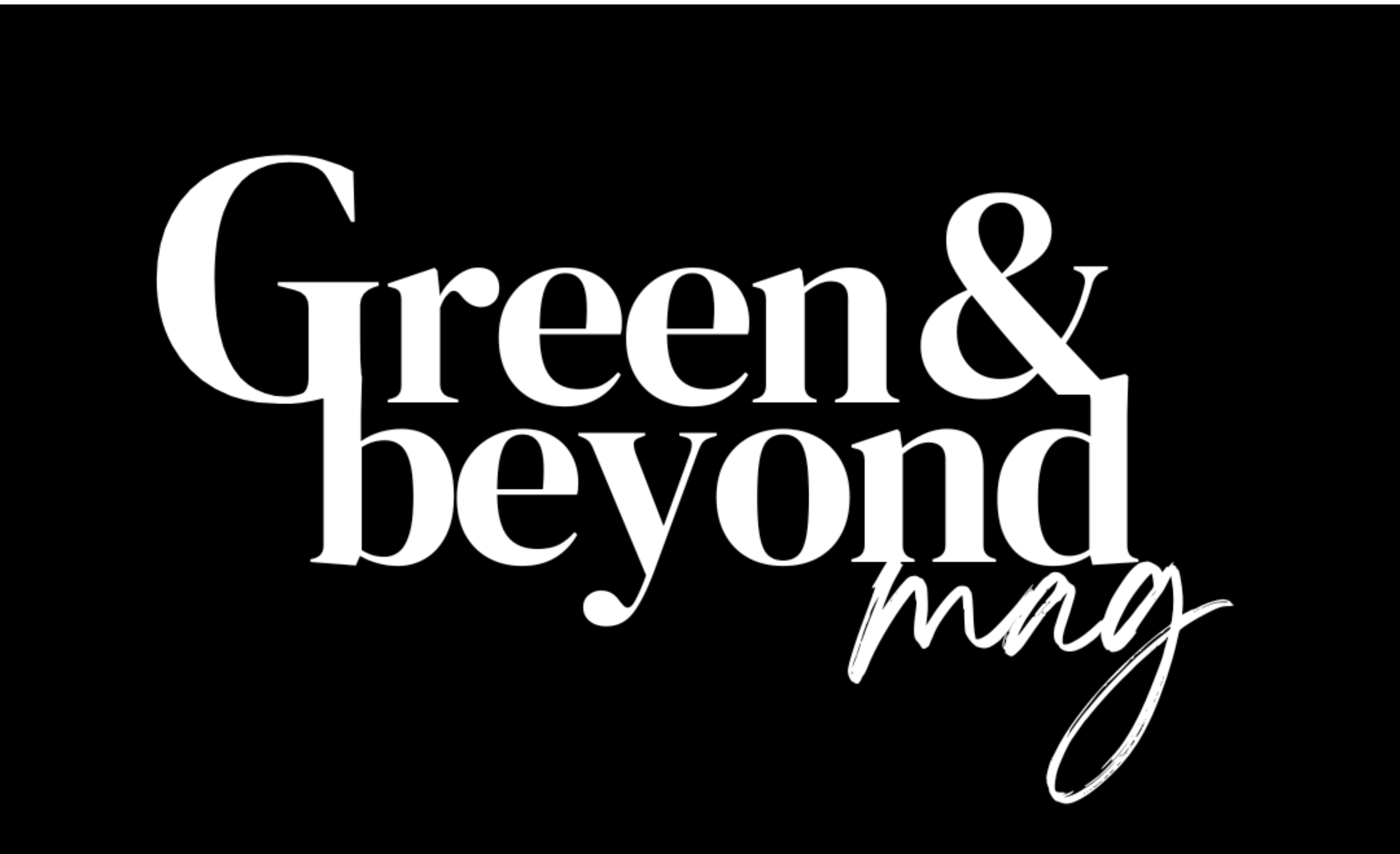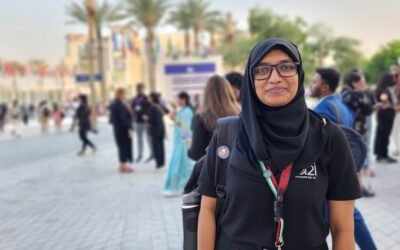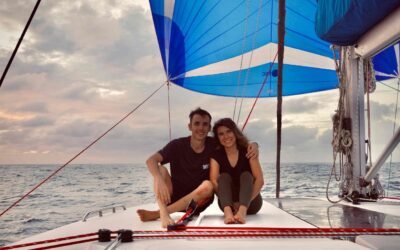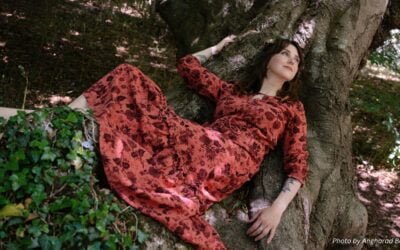Natalie Chung, a young social entrepreneur, environmentalist, and sustainability leader from Hong Kong has been selected to represent her country at the Dr Sylvia Earle Antarctic Climate Expedition 2023. At only 18, Natalie co-founded her social enterprise, “V’air” back in 2015 to promote low-carbon local tourism, i.e. ecotourism as a means to mitigate climate change. As a remarkably impactful sustainability leader in Asia Pacific, she has been awarded the Tatler Gen.T List, Eco-Business Youth A-List, and was recognized by The Japan Times as a female climate activist driving change in Asia.
Now, as she prepares to represent her country at the Dr Sylvia Earle Antarctic Climate Expedition 2023, let’s take a closer look at how she practices sustainability in her regular lifestyle and how she plans on creating a long-term impact through the upcoming expedition.
Tell us about the expedition.
I will be going on the Dr Sylvia Earle Antarctic Climate Expedition in February 2023. The mission of the expedition is to formulate 23 net zero solutions to accelerate carbon neutrality by the year 2035. This is currently our ambitious goal and our central message is actually to highlight the role of the Ocean in climate change mitigation, adaptation, and resilience because we think the ocean is a big missing piece in the puzzle and a lot of people only focus on land-based solutions when it comes to climate change while in a lot of countries in Asia, we’re actually very vulnerable to sea level rise and ocean acidification, which are accelerated by climate change. So, hopefully this expedition will shed light on some of the ocean-based solutions and how the communities can develop solutions that are both innovative and able to help us transition to net zero.

On the expedition, there will be a mix of crew members and ambassadors from various backgrounds and disciplines. We’re hoping to generate some interdisciplinary discussions and solutions. I’m a climate activist myself, from Hong Kong and there are people from the UN Network, IUCN, professors, and researchers from different fields. There are also writers, artists, and of course, underwater photographers. We have two National Geographic underwater photographers, Jennifer Hayes and David Doubilet, who will be capturing some of the photographs that will be used later for our exhibition around the world.
So the expedition itself would be a nine-day voyage and for the first two days we will have a small conference at Ushuaia, Argentina to formulate the resolutions. And then the final day, we will also have a day in Punta Arenas, Chile to post a conference on the resolution and how to carry them out to action steps on the ground, and how all the participants in the expedition can bring back these solutions, back to their home countries to spread the news and see how to implement them in the community.
How does it feel to be a part of the expedition team of Dr Sylvia Earle, who was recognized as the First Hero of the Planet by Time Magazine?

I feel very star-struck because Dr Sylvia Earle was always a role model for me. What she’s done for ocean conservation and as one of the pioneers in space, and we call her “Her Deepness” instead of Her Highness, for how deep she has traveled down the sea. So I think it’s a very precious opportunity. We did have some air time before, at virtual conferences. So, I once spoke with her and listened to her remark, which is absolutely inspiring.
And this time, what’s even more exciting is that the ship that we are boarding is also named after Dr Sylvia Earle. It is a new cruise ship for the expedition that is carbon-neutral. We will also be celebrating Dr Sylvia Earle’s work. So it’s very interesting. This ship will be on its first mission. But it will probably be Dr Sylvia Earle’s last expedition because she’s getting old.
So I think it will be a great platform and opportunity for a lot of youth and older generations to come together to form intergenerational climate solutions that will be inclusive and equitable for all. Because – I think the youngest on board would be eleven years old and the oldest would be like 90. So it’s a huge range and I’m very excited to be there.
But at the same time, I think, there is a huge responsibility for me to make full use of this, for example, by forming partnerships with different media outlets and especially with a focus on Asia, because most of the people on board, I would say, come from the Global North. And we need to make sure that the solutions are centered around the needs of indigenous people, and the underprivileged communities in global South and Southeast Asia as well. So, hopefully our discussion will be more inclusive by bringing in perspectives from Asia and the rest of the world.
How do you plan to add value to the expedition with your expertise in the areas of public education, corporate training, and media and communication?
My role in the expedition is the Key Opinion Ambassador. There are a total of around 30 of us and I think what differentiates us from the rest of the expeditions is that we are already doing monthly meetings on the resolution. So we’re kind of forming the backbone for the 23 goals that we will finalize on the expedition. Now we’re using the Delphi method. It’s like a social science methodology based on expert elicitation and literature review to try to find a consensus on what direction of solutions we are coming towards. So we’re having monthly meetings on these to formulate the expedition goals.
And then for me, I’m the only Hong Kong representative for this entire expedition. So I think I will play the role of bringing in some of the localized knowledge and also solutions back to Hong Kong, given that we have quite rich financial resources that we could mobilize and some of the corporate partners in Hong Kong that would be able to do something at scale. So hopefully after the expedition, I could use the findings to convince some of the major business leaders and political leaders here to implement solutions. That could not just benefit Hong Kong but also the rest of the world. For example, Hong Kong has a climate-resilient infrastructure, and how we can export these technologies and skills to the rest of the world and showcase our best practices. So I think I would ask this bridge throughout this expedition to amplify the impact.
How can media play an important role to raise awareness and help overcome the climate crisis by reaching the Net Zero Target by 2035?
I think the media can take a role in the whole communication strategy of the expedition. We want to focus on people who are very alarmed and concerned about climate change, people who already have some knowledge and want to act against climate change but they don’t know how or don’t know the full set of solutions yet. So I think for us as our focus is on Ocean, and the role of the Ocean, I think the media could help shape the narrative for – why is it so important to represent Ocean, the media can help to create the whole momentum around ocean which is so crucial for climate action, adaptations, resilient and livelihood, and how we can tie in the Antarctic narratives with some of the phenomena, we see in Asia. Because I think the Antarctic is at the forefront of climate change, they are warming at an alarming speed. They’ve already warmed three degrees celsius since I think they’re like pre-industrial age. So I think we can create/ consider the Antarctic as a model of what the future would look like if we continue this warming truck and then use the power of the media to paint that scenario. So that we can all feel the sense of urgency, at the same time the power to act. Because we know that the ocean is immense and there are so many potential solutions in the ocean that we have not yet fully explored.
You’re the co-founder of V’air. Tell us about the platform.

So we started up V’air back in 2015 as an organization to promote low-carbon, local tourism. The reason is just that, we figured that almost 20% of Hong Kong people’s per capita carbon emissions come from flying overseas. So, during pre-covid times, we used to fly a lot of short trips to Japan, Korea, Taiwan just for for weekend getaways. This issue was kind of not that elevated back in 2015 like now when most people are focusing on some of the energy-saving measures for climate change. So, I wanted to bring this back to the table, like – if there was an elephant in the room, when people said, “Oh I’m not using a plastic bottle but I’m flying like 10 times a year.” So I want to correct this by showing people the potential of local tourism – it’s actually eco-tourism and geological tourism. That’s how we started. And we have a web platform to showcase these attractions in Hong Kong. We also published a book showcasing 39 roots in rural and urban areas, so the book is like a guide to travel around locally. We also organized eco-tours for schools and corporations – introducing them to different tree species, special endemic insects, and mammal species in Hong Kong as a form of nature education. We realized that quite a lot of people enjoy hiking a lot, but they wouldn’t pay attention to the trees or they would not pay attention to the story behind the trail. So we think there’s immense value in doing that – kind of sparking that interest and curiosity in their surroundings so that they don’t always need to go abroad in order to find excitement or find a thrill.
How are you expecting to integrate your work at V’air into this Expedition?
I was actually planning, after the expedition, we would create more tours around marine protected areas. Because one of the preliminary resolutions that we have touched on in our current discussions, one of the goals would be enhancing marine protected areas globally. In Hong Kong at least 3% of the ocean is protected but we want to raise that to 10% which is the global standard. We could also be hosting more ocean-themed eco-tours. Because currently, we have a lot of land-based tours like terrestrial country parks, and some of the rock formations but not so much in the sea or near the shore. So that’s what I’m planning to do.
Also, another way to integrate is, how we’re training the next generation of young leaders. So in Hong Kong, we have our internship and fellowship program. So, in the past few years, we have already trained over 100 youths and sparked an interest in sustainability and climate advocacy. I’m hoping through the expedition, I will be able to learn from some of the other famous educators on board and see how we can make or copy our existing model elsewhere, like in other Asian countries or how we can collaborate with different partners to extend our impact.
Another thing I would like to try is to expand to other regions. We tried to expand to Singapore before but there was a bit of difficulty and also Covid restrictions. So now we’re looking into mainland China opportunities so that our target group could be bigger. I guess it’s not enough for the Hong Kong people to stay in Hong Kong. Maybe we need to give them more options, for example, taking high-speed trains from China to Russia, which is also a low-carbon mode of tourism. There’s this Siberian train track, so maybe that could be an option, also low-carbon. Because it feels very restrictive to have everyone stay here. We want to keep the experience educational but also entertaining. So we’re looking at some of the high-speed rails as travel options. And then, you can also apply to other places like India. I guess in India, there are lots of ecological hotspots that local people may not pay much attention to. So simply encouraging more people to travel, from South India to North India, could reduce outbound travel and harm to the planet.
You promote eco-tourism through V’air. How is this expedition aiming to promote eco-tourism?
I have actually had a lot of self-reflection on whether I should join the expedition because I was wondering if what I’m doing – like joining the expedition, could cover my carbon footprint. So, first of all, we will be offsetting the whole expedition ensuring all the operations are as low carbon as possible, for example, we have vegan meals on this ship and we’re ditching single-use plastic, etc. Another important thing is, how we are shaping the narrative to ensure that it’s not promoting exploitative tourism to the Antarctic. Because people have previously treated it as a leisure option and not just for research purposes, a lot of people go there just to see the penguins, like a once-in-a-lifetime opportunity. So, we actually do not especially encourage that, but then we don’t want to be too ironic about how we have the privilege to go but other people don’t. So I think we are planning to work on a more immersive educational experience, such as, we are introducing VR so that we can take some VR video clips for people in different places to experience it without having to travel there. And I guess the future of tourism, even eco-tourism would be more of a hybrid reality experience – like how we are integrating some tech elements into the tourist experience and using different senses to feel like having meditation and wellness integrated. Therefore I think, it is important to have that narrative or have that note in mind that we are a very privileged group of people who are able to go there firsthand. And how we are translating these first-hand experiences into something valuable for people to experience second-hand would be the key and the goal for us.
Why do you think raising awareness, especially among young people is necessary?
I think young people play a crucial role in shaping the future because eventually, we are the ones who will be the steward of the planet in the future. So what we are deciding now and what we are proposing now will potentially shape how we live and how habitable the planet becomes. So I think it is definitely important to hear and listen and use voice in policy making and have a system that can institutionalize our thoughts into actual policy and decision-making processes instead of a tokenized form of youth participation.
And in this case, I think for the expedition we are hoping to come up with the 23 high-level goals, but eventually, we want to come up with action steps beneath the goals. So, for example, one of the goals could be promoting less consumption of seafood. Because it promotes sustainable fisheries and also protects ocean resources.
And then on action steps, we can translate it to youth by organizing some youth campaigns, or incorporating this into part of the syllabus so that they can understand at a young age what’s the issue with consuming too much seafood and how we can select wisely what to eat. I think incorporating that into the educational curriculum is the best way to ensure that we know from a young age, what is the right action to take for a planet that we would like to see in the future. Also, another thing is how culture and values are created and are kind of formulated at a young age – like once you are structuring your value system, it’s important to have that intervention on what’s the most ideal or sustainable way of living. So I think that’s also why I really think it’s important to focus on nature education. Because when you bring people up to nature, they get to understand why it’s so important to conserve it rather than educate them afterward to pick up their trash, to not do this and not do that. So I think building that kind of intrinsic human nature relationship from a young age is crucial as part of our youth development training for climate action.
We’ve noticed that you’re a keen follower of sustainable fashion. How did that journey start?
Actually, I haven’t really purchased clothes since I was young. Because my mother works as a fashion manufacturer and she always has a lot of samples and some of the defective items that she would just bring home and we’d just wear them. I guess her job experience shows me how disruptive the fashion industry is, given that they’re throwing away so many clothes she tries to bring as many as possible back home, but then the rest will still be thrown away. And so, from a young age, I realized this problem of fast fashion and what we can do as individuals to counter it. I was lucky enough that I didn’t have to buy anything because my mother would give it to me. But now, as I grow older, I still need to shop on my own. So, then I will opt for thrifting second-hand clothes. I think I kind of started to experience the joy of thrifting when I was in the United States for exchange studies and saw a lot of thrift shops. In Hong Kong, it’s not as common to find these thrift shops, as most of the thrift shops are relatively low-end – very, very cheap fashion or fake items. So, it wasn’t very encouraging to go there. But then, a few years ago, I came across a new foundation in Hong Kong called Redress and I really appreciate their work. It’s run by 3 to 5 people – a small team but they’re collecting a lot of relatively higher quality secondhand clothes, and then they sell them. They rent a space in an A-grade office building and host a Second-hand Gala for everyone to buy these clothes at a cheaper price. I’ve become a fan of that Gala and I really appreciate how this is becoming a trendy thing to do – to wear secondhand items. I hope this will continue in the future.
I guess the most important thing is to destigmatize wearing second-hand. Because when I go to more high-end places and I tell people that I’m wearing second-hand, they might still think lowly of me. I think we just need to detach the idea of wearing second-hand from being cheap because it’s actually regenerative and positive for the planet. So I’m actively trying to shape this narrative by being proud of wearing second-hand and also encouraging more of my friends to change into this new lifestyle.
Do you go through eco-anxiety? If you do, how do you deal with it?
I guess for me, I haven’t really experienced true eco-anxiety, unlike some of my friends. I guess it’s because I’m living in a relatively privileged city, so I don’t feel the immediate impact of climate change on our community. I do feel sad seeing all these negative things happening around the world. We need to be even stronger and even more confident in trying to solve it from the perspective of mitigation to adaptation. I think seeing all these extreme events, my attention is shifting more from the mitigation side to the adaptation side, because I think, for mitigation, it kind of seems like some of the solutions are natural because there are financial benefits to do so, like people are investing in renewables because it just makes sense. But for adaptation, it’s always about loss and damage, it’s always about compensation. There’s no natural motivation to push adaptation projects to be realized. So, personally, although I haven’t felt eco-anxiety, I just feel a stronger urge to work on climate adaptation and see what we can do to make these impoverished communities live better and even for resilience – like how do we build resilience in that infrastructure in community networks. So that we can prevent damage to them when future events hit.
Tell us about a practice(s) in your culture that’s actually very sustainable and good for the planet.
I guess it’s the rice dumplings, like, for Dragon Boat Festival, we will wrap rice with banana leaves and then we tie it with a string made from seagrass. So it’s a natural way of making our delicacies.
How do you practice sustainability in your regular lifestyle?
I think I’m very cautious of what I do and what I admit, for example, for travel, I would try to aggregate my tours as far as possible. Then I wouldn’t need to travel too many times a year, even for important events. Then, of course, I don’t use any single-use plastic, so I never buy drinks outside. I would always only drink water most of the time. Or, maybe if I really need, I get aluminum canned drinks so we can recycle the cans. For fashion, as I mentioned before, I always follow slow fashion, and I even buy my furniture and other items from second-hand marketplaces. For makeup, I use vegan and cruelty-free brands. I’m a pescetarian and I’m moving toward becoming a vegetarian or vegan, but I’m still struggling with some of the nutritional requirements for myself. So I guess, my advice would be to do what you’re best at and to pursue that.
I’ve also learned over the years to not stigmatize people. Like, I used to discriminate against everyone who used plastic bottled water but then when you think about it, maybe they never take a flight, or maybe they’re very sustainable with their diets. So I think everyone can play that part and support others because everyone doing things, even if it’s something little – would mean a lot to the whole world.
What do you do for fun?
I love hiking because it is a good way to connect with nature and also with the local villages, especially going to the snack shops selling local food, like tea cakes along hiking trails.
Who is your idol?
I was actually inspired back in primary school when I did a project on climate change and we interviewed a polar explorer called Dr Rebecca Lee. She’s the first woman in the world who has traveled to the North Pole, the South Pole, and Mount Everest. So she’s my absolute idol.
And now I am very honored to be able to go on this expedition and hopefully I can bring as much impact to the world as she did because she inspired me just by having one interview. And I hope that I can also speak to someone and inspire them to be an advocate for the climate.
What’s your mantra for life?
I think it’s that – change starts with ordinary people doing extraordinary things. I always think that change doesn’t need to start with something very grand but just as my idea would evolve into something that is material if you work hard enough and there’ll be people supporting you along the way. So when I first started V’air, it was completely out of the blue – we had just joined a competition and had this idea and then we decided to continue it – just because we really believed in the mission. And then we met quite a few important mentors along the way, who advised us to keep going and introduced us to business partners so that we could grow and scale up till today. So, I think, we need to believe in ourselves and our capability to do something bigger than ourselves.
How can people join you in the climate movement?
I think the best way is to just reach out to me if you’re interested in starting a regional chapter of Vair, like just the same idea of promoting local tourism in your locality. And we can share some resources with you to start the organization in your country or city and even with some startup funding that we’re able to raise here in Hong Kong. So if you want to do something in Bangladesh, for instance, and you’re looking for somewhere to start, we can potentially give you some grants to start it locally so that we can expand our impact.
For other things, you can stay tuned with my social media and I’ll be posting some of the channels through which other people can participate in the Antarctic Climate Expedition. Because I think during and after the expedition, we’re planning some idea co-creation rounds where we’ll be doing virtual webinars and brainstorming sessions that everyone can join in forming part of the resolutions for Net Zero and potentially some of the submissions we make to the UN and National governments.
